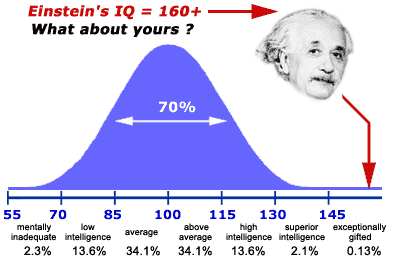September 18, 2012
Since I can't seem to focus on anything, I decided to write
another blog post, just because of the sheer fact that I love blogging and I
had stuff that was on my mind. So I have decided to talk about something that
was pondering my mind all day....
In math class today, before we started learning the wonders
of Sine Law (again), I was encapsulated by the wondrous words of my beloved
DEAR book. It was called "The Psychology Book: Big Ideas simply
explained". The title is pretty self-explanatory, but for those who don't
understand I will clarify for you. It discusses various theories within the
psychology world and the proof behind them.
Today I managed to read through three of those theories. All
of which were very intriguing, especially since I have such a great interest in
psychology.
The first theory was conjured up by G. Stanley Hall which
discussed that "Adolescence is a new Birth". In his book entitled
"Adolescence" (written in 1904), Hall believed that when you come
about a certain point in life (that being in your teenage years), you transform
into a new person. That you come out as a stronger and more mature individual.
He was highly influenced by the work of Charles Darwin and the "theory of
evolution". He stated that the stage of adolescence "craves strong
feelings and new sensations...monotony, routine and detail are intolerable.
Adolescence is when the very worst and best impulses in the human soul struggle
against each other for opposition." (The Psychology Book, page 46). This
makes sense, because I can guarantee that most have us, in fact all of us have
experienced these said feelings at some time in our lives.
His theory went as so:
·
First, human development is determined by
nature, which is a repetition of our so-called "ancestral record".
·
He stated that a child (as a matter of fact all
children) has animal-like dispositions and goes through several stages of
growth, which relates to Erik Erikson's psychosocial theory (for those of us
who took Anthropology, Sociology and Psychology course last year) which was
developed after Hall's theory in 1950.
·
Then when an individual becomes an adolescence
(teenager), the evolutionary momentum subsides (stops). At that time, that
person undergoes a change, called "individual change."
·
At this time (as some may know it as the
"wild times"), the person becomes increasingly rebellious, sensitive
and self-conscious. Which makes them prone to depression.
·
Finally, the person emerges as an
"adult", a more mature and "high-order" individual.
Therefore, he inferred that through this process of
development implies that "adolescence is a new birth." Hall also
believed that teenagers were highly susceptible to developing depression, a
mental disorder in which an individual encounters severe thoughts and feelings
of sadness, with a lack of energy and difficulty in maintaining concentration
or interest in life. He called this the "curve of despondency", which
starts at the age of 11 and hits its highest point at age 15, in which it then
decreases gradually until the age of 23. From this, he was able to interpret
that self-consciousness that one has leads to self-criticism, which then later
results in a total change of self (personality, feelings, actions...).
However, while his work may have appeared to be particularly
negative on teenagers, Hall discovered that because teenagers have more
advanced reasoning skills. And as a result are able to read "between the
lines" while allowing their sensitivity to a given situation to influence
their reasoning and make it stronger and more valid.
 |
| G. Stanley Hall |
 |
Hall's book entitled "Adolescence"
|
He went on to say "Adolescence is a new birth, for the
higher and more completely human traits are now born."
The second theory was by Alfred Binet, who said that
"the intelligence of an individual is not a fixed quantity". Alfred
Binet too was also highly influenced by other peoples work, which included
those of: Charles Darwin, Francis Galton and Wilhelm Wundt. Darwin, who created the debate in his book
"The Origin of Species", whether intelligence was inherited
genetically or that it could be influenced and changed by external factors.
Galton, who was conducting his research in London, England concluded that intelligence
was "fixed at birth". And around the same time there was Wundt who
was studying the idea of introducing the idea of an intelligence quotient (IQ).
 |
Alfred Binet
|
After studying at Salpetriere hospital in Paris, France,
Binet conducted a study on his own children, in which he discovered that a
person (more specifically a child's) frame of mind was crucial to learning. In
1905, Binet was accompanied by a man named Theodore Simon in his research.
During that time, they developed a test that could establish a reading of a
person's intelligence. They called it the "Binet-Simon test", which
was essentially an IQ test. To test his theory, they took children and
separated them into 5 groups, according to age. They then subjected them to
testing, 30 tests as a matter of fact. Each task was designed to test the
child's cognitive and developmental abilities as well as their problem solving
skills. These tests increased in difficulty, going from following a beam of
light and defining words to reproducing drawings from memory and answering
challenging questions.
By the end of his research and after many issues concerning
this method and the reliability of his test, it was concluded that intelligence
is not a permanent thing and that it changes as a person develops through life.
That the number reflected on an IQ test is simply a mean of determining how far
along a person's problem solving and thinking skills are developed. Not how
"challenged" or "smart" they are.
So next time you get the chance, try an IQ test and see what
the results are. I bet they'll boggle your mind. And while you're at it
consider this question: "Do you think that IQ testing is an effective and
accurate way of determining one's intelligence?"
The last theory is an approach in the Memory Studies field
of psychology. It has no given name and is more of a fact. This theory,
presented by Hermann Ebbinghaus believed that within 24 hours of learning
something, we end up forgetting 2/3 of that information.
 |
Hermann Ebbinghaus
|
Ebbinghaus conducted many experiments to try to aid with
memory retention. One of which included using "nonsense syllables", 2
300 sets of syllables 3 letters long which followed the standard
consonant-vowel-consonant sequence. His experiments later showed that:
·
Memory loss occurs fastest within 9 hours of
learning something
·
The things that were forgotten can be relearned
faster than learning something for the first time
·
Over-learned (or "studied beyond
mastery") material is remembered for a longer period of time
·
Things that are learned at the beginning and end
of a series are more easier to remember
·
Meaningful things are remembered for
approximately ten times longer than random facts.
·
A repeated learning sessions over a long period
of time improves ones memory retention
 |
The chart that Ebbinghaus developed showing the memory retention (%) versus the amount of time.
|
By the end of his studies, Ebbinghaus discovered that not to
his surprise, he was able to remember things that he spent the most time
studying. Also, that the best time to start remembering something is
immediately after you learn it (within the first hour of hearing it). That way,
your memory will be able to recall and refer back to it easier than trying to
study it all towards the end of a term (eg: exams).
This has given me an idea to change the way I study for
tests, quizzes and exams. As opposed to waiting until the night before to study
all of the material in the Unit, which turns out to be about 200 pages worth.
Spreading it all out within the span of a few days, or weeks depending on the
extensiveness of the task. Studying little bits of information at a time
For example, on Wednesday I have a biology test on the
Biochemistry Unit. How I planned to work this out is as opposed to my schedule
looking like this:
·
Tuesday-Monday (the following week)-put it off
and hope it goes away
·
Tuesday: study all aspects the night before and
hope I can remember everything by tomorrow
It will look like this, starting with the things we learned
first:
·
Tues: Functional Groups (Structures/Names)
·
Wed: Functional Groups/ Carbohydrates
·
Thurs: Carbohydrates
·
Fri: Proteins
·
Sat: Lipids
·
Sun: Nucleic Acids
·
Mon: Nucleic Acids
·
Tues: Quick recap of unfamiliar concepts
(I kid you not; this is how my test schedule actually looks
like at the moment. Except I have specific times to study on my schedule.)
By doing this you can reduce the amount of time you study,
while still being able to retain more information than "cramming". It
is also flexible because by planning ahead, you are able to change how much and
what you study, according to how much existing knowledge you already have and
other factors which may interfere (other homework, projects, work...)
Well, I'll see how that works out on Wednesday, as you see I
am one of those people who cannot memorize anything at all.
Because I find this all to be just simply fascinating, every
week I 'll post about one of the theories or some kind of interesting article
(like I did in my last post). It's just something to keep you occupied while
you read this magnificent blog of mine.
I see that I have gotten sidetracked once again so I will
end this little blog post with a little message.
"In learning to know other things, and other minds, we
become more intimately acquainted with ourselves, and are to ourselves better
worth knowing."
~Philip Gilbert Hamilton
Anyways, off to go write this campaign speech and study for
my Bio test.
Until then,
~Shannon~ ✌.(ʘ‿ʘ).✌









